

|
|
|


|
|
1/10 Scale Nitro Truck/Truggy:
Himoto Megap MTR-3 - HI933T
|
Introduced by Himoto Racing circa 2008, the 4WD Megap MTR-3 Truggy - # HI933T - came with an 18CXP engine, radio system and three differential case gearbox.
The model is shaft driven, on an alloy plate chassis, with gear type differentials, coil spring over oil filled dampers, dogbone drive-shafts and ball bearings.
A Megap MTR-3 Upgrade version - # HI933TM - was introduced circa 2009.
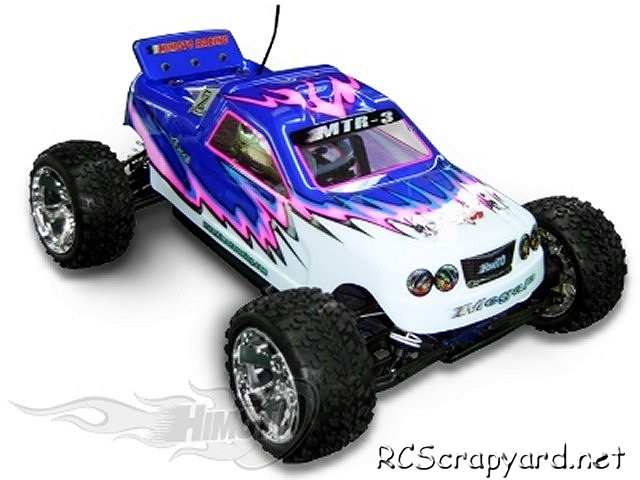
To race the Himoto Megap MTR-3, it requires time and patience, to tune and adjust for improvements in handling and steering ability and to get the grip you need to stay on course when manoeuvring around tight, slippery corners. A little can be a lot when it comes to changing your cars settings and our easy methodical directions will guide you to the best Set-up to help you win and keep you winning.








|
|
|

★ Himoto Megap MTR-3 Chassis ★
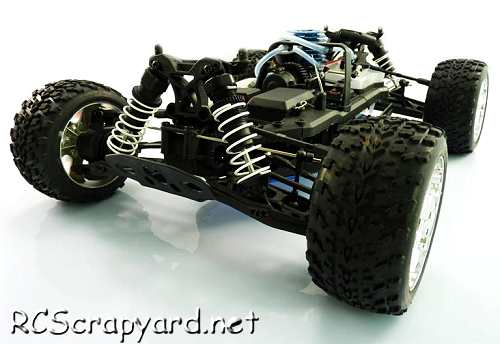
★ Himoto Megap MTR-3 Chassis ★
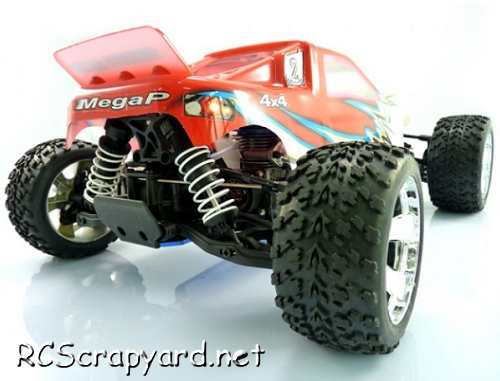
★ Himoto Megap MTR-3 Chassis ★
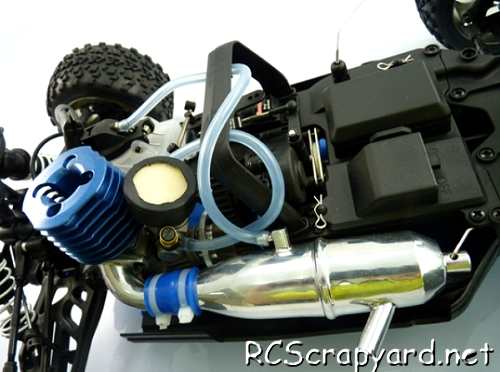
★ Himoto Megap MTR-3 Chassis ★
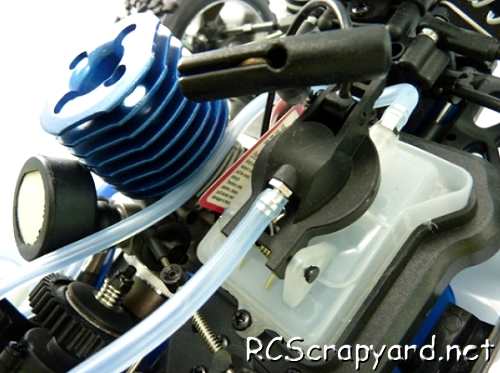
|
Buying a Used Himoto Megap MTR-3 Truggy (and What to look for)
Make a General Visual Inspection
Check the Body-Shell
If the body shell of your Himoto Megap MTR-3 is broken, ripped or damaged in any way, this can be easily repaired with rubber solution glue. Also, for added protection and if available for your Megap MTR-3 model, fit an under guard to stop dirt and gravel entering the chassis. Drive Shafts and Turnbuckles
Examine the Drive System
The gearbox of your used Truggy should be opened up to check for gear wear and lubrication. A thin coat of grease is often used on internal gears and although this is fine for basic running around on the back yard, if you intend to race your Truggy at a higher level, this should be removed and replaced with racing oil (ZX1 or Teflon Oil). Of course, this should be reapplied after each race meeting. Pinions and Spur Gears
Don't Neglect the Ball-Joints
Ball joints always cause problems. For top level Nitro Truggy racing, the plastic ball connectors should be checked and if deemed necessary changed after every meeting. A simple thing like a loose fitting connector popping off could easily end your race, so better safe than sorry. Steering Servo and Servo-Saver
Stabilizers
If body roll on your Himoto Megap MTR-3 is a problem, handling can be improved with the use of stabilizers, anti roll or sway bars, stiffer tuning springs and, or, thicker silicone oil in the dampers. Don't Forget those Bearings
▼ Scroll Down for More Articles and Advice ▼
Or, check out our RC Model Car Setup Guide
|
|
Manufacturers and Brands Catalogued, Listed and Reviewed by RC-Scrapyard.
At present, the RC Model Manufacturers, Brands and Distributors covered by us are: ABC Hobby, Academy, Acme Racing, Agama Racing, Amewi, Ansmann Racing, ARRMA, Team Associated, Atomic RC, Axial, AYK, Bolink, BSD Racing, Capricorn, Carisma, Carson, Caster Racing, Cen, Corally, Custom Works, Durango, Duratrax, ECX - Electrix, Exceed RC, FG Modellsport, FS-Racing, FTX, Fujimi, Gmade, GS-Racing, Harm, HBX, Helion, Heng Long, Himoto Racing, Hirobo, Hitari, Hobao, Hong-Nor, Hot Bodies, HPI, HSP, Intech, Integy, Jamara, JQ Products, Kawada, Kyosho, Losi, LRP, Maisto, Mardave, Marui, Maverick, MCD Racing, Megatech, Mugen, New Bright, Nichimo, Nikko, Nkok, Ofna, Pro-Pulse, Protech, PTI, RC4WD, Redcat Racing, RJ-Speed, Robitronic, Schumacher, Seben, Serpent, Smartech, Sportwerks, Step-Up, Tamiya, Team-C Racing, Team Magic, Thunder Tiger, Tomy, Top Racing, Traxxas, Trinity, Tyco, Vaterra RC, Venom, VRX Racing, WLToys, X-Factory, Xmods, Xpress, Xray, XTM, Yankee RC, Yokomo, ZD Racing and Zipzaps. |
|
Hints, Tips and Information
Ackerman
So - What is Ackerman? |
|
Hints, Tips and Information
How to Reduce the Weight of your RC Model Car
If you ever step up and enter a regional, national or international event in RC, you will find one specific rule concerning the weight of your car.
|
|
RC Models:
|
Radio & Motors: |
Other
Accessories: |